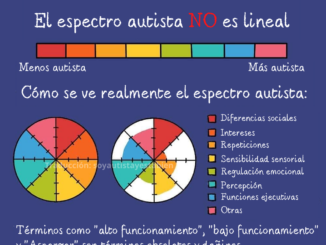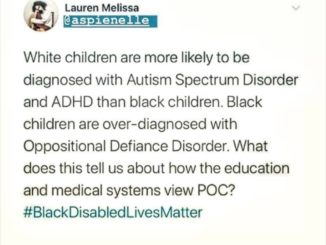I mentioned “intersectionality” briefly a few days ago when I was describing disability, and I think many people have some understanding of what it means: two factors converging — like race and gender, or gender and class — to make factors for the individual that are more difficult than either of them would have been alone.
It bears mentioning, though, that intersectionality is not supposed to be a math problem. The question is not, “If Person A is Black, and person B is Black plus autistic, who has it harder in life?” That greater than/less than equation is certainly simple enough to solve, but then if you take this to its logical conclusion, you end up with equations like, “If Person A is female, Asian, neurodivergent, and middle-class, but person B is nonbinary, Black, neurotypical, and poor, who has it harder in life…?”
It creates this ridiculous and, frankly, impossible to unpuzzle version of the “suffering Olympics” — who really has it the worst of ALL?
That’s not even the point of the question we should be asking!
What helped me really understand intersectionality was breaking it down to the literal root of the word: intersection. If there are two streets named Main Street and Fourth Street, and I stand in the very middle of the road of the intersection of the two. Am I on Main Street? Yeah. Am I on Fourth Street? Yeah. But am I also in an in-between place that can’t be entirely defined by the either/or? Nobody else along Main Street can be exactly where I am without also being on Fourth Street at the same time. If they’re not on Fourth Street, then they don’t fully understand where it is that I’m standing.
Somebody Black experiences racism. Somebody Autistic experiences ableism. But experiencing the both at the same time creates both a lived experience of each independently, but also, crucially, an experience of the two overlapping that cannot be fully encompassed by an explanation of either one independently. They interact with one another in ways that don’t occur individually.
A classic example of this is that there are misogynistic stereotypes about women. There are also racist stereotypes about Black people. But there are racist, misogynistic stereotypes about Black women specifically that are not attributed to Black men and are also not attributed to white women. It’s the intersectionality of the two that carries its own specific form of discrimination or prejudice. (I don’t see any reason to list stereotypes here; we all know stereotypes and can think of examples, and it’s not really edifying to repeat them.)
This is all important in preparation for the next few days’ worth of posts, hence why I’m posting so much about this when it’s not really specifically or solely a thing to do with autism. This can be taken and expounded on for understanding of the intersectionality between many factors and secondary, tertiary, etc factors that an individual might experience.



